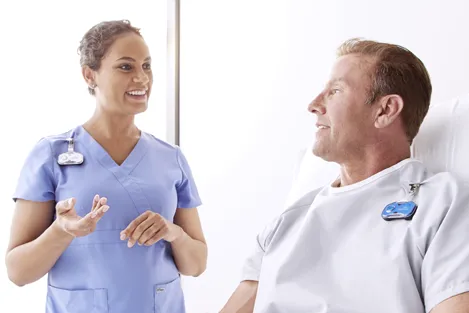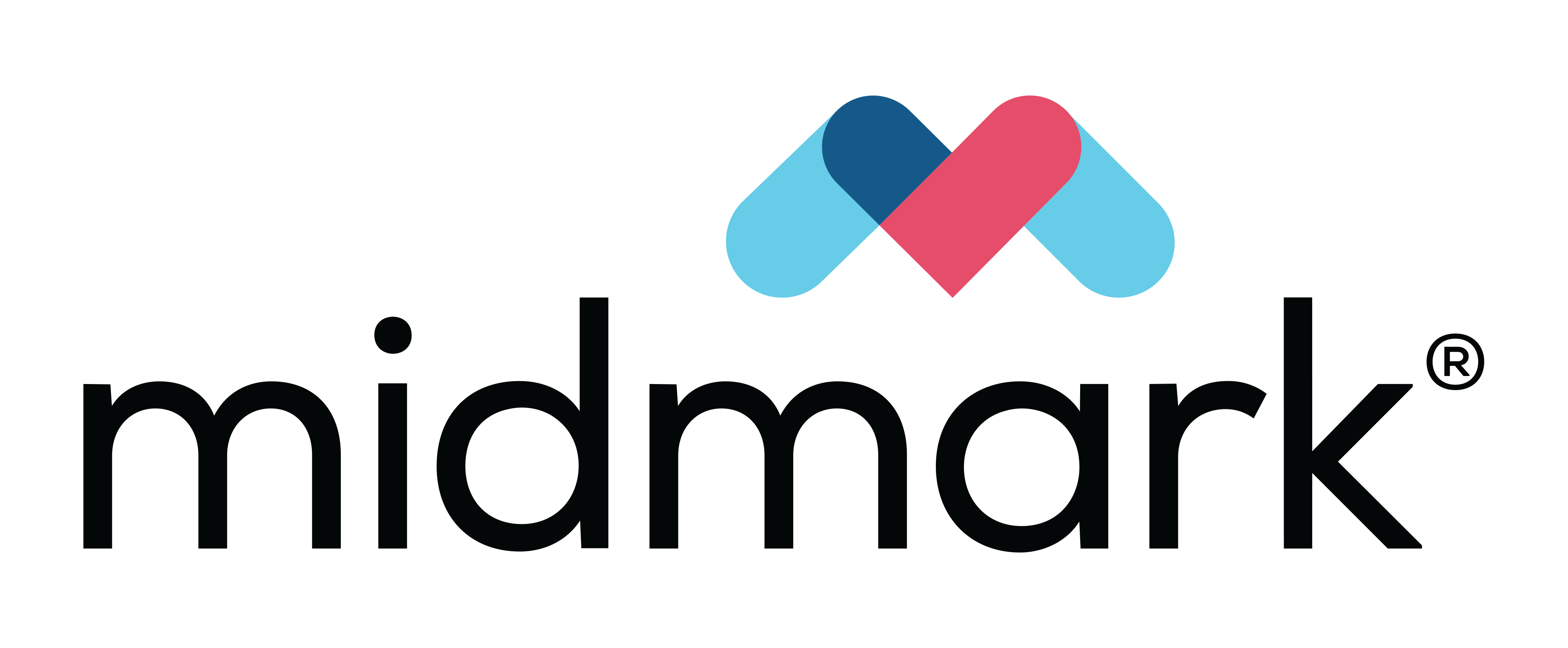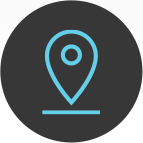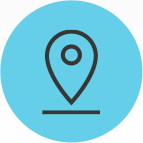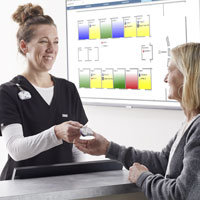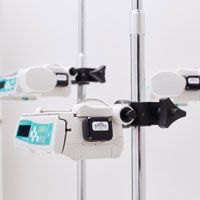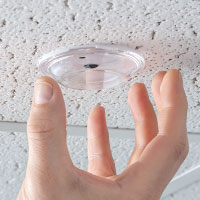What’s Next for RTLS in Acute Care? Current Benefits and Trends to Watch

6/25/2025
With care needs increasing exponentially, hospital staff are being asked to do more with less. Physicians and nurses are being pressured to care for as many patients as possible, without sacrificing quality patient time. And, it’s all evolving in the face of historic staffing shortages. This complex environment is creating challenges for hospitals that include nurse burnout, operational inefficiencies and patient safety risks.
Real-time locating systems (RTLS) are helping hospitals by delivering location data that helps improve operational efficiency and patient care while lightening workloads. From automating nurse call systems and managing mobile equipment to enhancing staff safety and improving patient flow, RTLS harnesses real-time data and delivers actionable insights that empower organizations to improve their processes and reach their organizational goals.
Growing Demands for RTLS
As care delivery becomes more complex, healthcare organizations are becoming increasingly reliant on data-driven tools to meet patient and staff needs. As part of that movement, the global RTLS healthcare market is set to grow exponentially over the next decade as an increasing number of health systems adopt the technology to deliver improved healthcare quality, enhanced safety and operational efficiency.
How RTLS Works
At the core of that growth is the ability of RTLS technology to guide operations and align people to process. RTLS components interact in real time to provide continuous data on the location of people and equipment. Here’s how it works:
- Badges: Patients and staff wear RTLS badges that emit locating signals, communicating real-time data to sensors throughout the facility.
- Asset tags: Similarly, asset tags affixed to mobile equipment such as IV pumps, ECGs and wheelchairs emit current location signals.
- Sensory network: Badge and asset tag signals are received by sensors in the environment, which can be existing, compatible networking infrastructure or sensors placed throughout the facility, or a combination of both. These devices receive the signals and communicate location data to the software.
- Software solutions: The sensor data is visually displayed on workstation computers or large screen displays in common areas, to show who and what is where so care teams stay in sync.
RTLS utilizes a variety of technologies to track assets, patients and staff with varying degrees of precision. They include:
- Room-Certain Locating: Infrared (IR), ultrasound and ultra-wideband are traditional RTLS technologies that, while highly accurate, can be expensive to deploy.
- IR is an invisible form of light that provides precise, room-certain location data within 1 meter, allowing for locating to the room, bed and chair level.
- Ultrasound emits high-frequency sound or radio waves as a locating signal. It determines distance using time of flight measurements, or the time it takes for the signal to travel between the two devices.
- Ultra-wideband (UWB) is a short-range radio frequency technology that transmits data across a wide spectrum of frequencies, enabling real-time location tracking with sub-meter accuracy.
- Zone-Level Locating: Wi-Fi-based RTLS triangulates the location of a Wi-Fi signal and provides estimated location data within 5-15 meters, so it might be several rooms away from the reported location, or even on the floor above.
- Near-Room Locating: Bluetooth® Low Energy (BLE) is a cost-effective RTLS technology that’s increasingly used in healthcare because it’s an open standard that’s widely available. It offers near-room accuracy (within 3 meters), making it suitable for use cases where a general vicinity suffices, such as finding equipment or delivering the location of staff duress incidents. BLE can be deployed via compatible Wi-Fi access points, dedicated Bluetooth sensor networks or a combination of both.
Finding the right technology fit depends on a hospital’s needs and goals. Wi-Fi is useful for Biomedical teams needing general asset tracking, and BLE provides even more granular data than that. But the precise, room-certain technologies are required for high-ROI use cases such as patient flow and nurse call automation.
Key Benefits of RTLS in Acute Care Environments
In acute care settings in particular, some of the key benefits of RTLS include:
- Operational Efficiency: RTLS delivers actionable insights that empower organizations to optimize staff allocation and equipment usage. These enhancements can reduce wait times and improve patient throughput for clinical efficiency that can enhance outcomes.
- Staff Safety and Retention: In a time of increasing workplace violence in healthcare, real-time locating systems enable staff to signal for help with a personal duress button that notifies responders who needs help and where, making staff safety a priority. RTLS can also be used to lighten the nurse workload through other features such as nurse call automation, suppressing alarms based on location data, and timestamping events in the EMR, which can further enhance staff satisfaction.
- Enhanced Decision-Making: Decisions about the right number of people, the right amount of equipment or the right processes are often made without the right information. RTLS analytics enable hospital leaders to measure performance with reliable and timely healthcare KPI data to monitor workflows, adjust staffing levels and track resource utilization—and then verify quality improvement efforts with quantifiable metrics.
Real-World Applications in Acute Care
While these benefits of RTLS surface in myriad ways in acute care every day, here are some of the most compelling ways they come to life:
- Nurse Call Automation: Eliminating manual tasks by automatically documenting responses to patient calls improves staff satisfaction and enables nurses to focus on patient care, which leads to more accurate response time documentation. See how Midmark CareFlow™ RTLS has brought much-needed comfort to a vulnerable patient population at Nemours Children’s Hospital.
- Staff Duress: While nurses are trained to handle dangerous situations, RTLS staff duress alerts give them comfort and peace of mind of knowing they can simply press a button to get immediate help in a threatening situation. When staff feel safe, they can provide better quality care. Learn how a New Jersey medical center uses CareFlow RTLS to protect staff and create a safer work environment.
- Alarm Management: RTLS interfaces can enable the intelligent suppression of alarms based on staff location to reduce distractions and alarm fatigue. Watch this webinar to learn how Sentara Healthcare leverages RTLS to address alarm fatigue and enhance clinical focus.
- EMR Automation: RTLS can accurately capture timestamps of patient milestones and automatically bed patients to speed up assignments and transfers, reducing clicks and manual entry for staff. The CareFlow RTLS EMR interface is listed in the Epic Toolbox and meets Epic's recommended best practices for RTLS integrations. Read how one health system automates Epic with CareFlow in this case study.
- Asset Tracking: With the ability to easily find equipment for patient care, RTLS asset tracking helps hospitals reduce costs through better equipment utilization. In addition to reducing wasted time spent searching, it also allows them to better manage assets for preventive maintenance with visibility to the entire fleet, which increases clinical engineering efficiency. See how Midmark CareFlow RTLS has helped McLaren Flint increase pump utilization and decrease capital expenditure.
- Infection Control and Compliance: Automated contact tracing during outbreaks or exposure events helps hospitals minimize the risk of spreading contagions by quickly identifying potentially infected patients and staff. This includes accurately identifying length of exposure and which rooms and equipment need disinfecting. Learn about hospitals using RTLS to manage contagion exposure in both outpatient and inpatient environments during COVID-19 and beyond.
- Multi-solution Implementation:
Discover how The Johns Hopkins Hospital has scaled its Midmark CareFlow RTLS to expand its footprint to nearly all inpatient areas, supporting patient flow and staff efficiency.
Learn about the outcomes at Columbus Regional Health following expansion of its RTLS efforts following flood damage to its infrastructure and technology systems.
Addressing Privacy Concerns
While RTLS undeniably empowers a better care environment, hospitals may face concerns from staff about privacy and surveillance. These concerns can be addressed with a combination of transparent communication, clear policies and secure systems.
It’s important to emphasize that RTLS is a tool for empowerment, not discipline—one that can help lighten staff workload and improve patient care as well as their own safety. To create a culture of trust during implementation, it’s important to keep an open dialogue with staff and address any specific concerns as they arise with clear explanations about how the data is used and secured. Following these steps can help overcome the “Big Brother” perception of RTLS:
- Highlight the value: RTLS saves time locating equipment and colleagues, enhances safety with duress alerts, and streamlines care delivery for better outcomes
- Engage stakeholders early: Bring front-line care teams to the table when planning your RTLS journey
- Ensure Executive Leadership: Success starts with leadership—when leaders embrace RTLS, teams follow
- Provide ongoing support: Expert training and coaching turn RTLS into an indispensable tool for safety and efficiency
Trends and Innovations to Watch
Looking ahead, RTLS vendors will continue to innovate and leverage the latest technology for even smarter solutions.
As RTLS technologies advance, its adoption for multiple use cases will become more attainable. BLE enables an affordable facility-wide network for near-room locating, making it ideal for staff duress and asset tracking. But it doesn’t provide the room-certain accuracy that makes technologies such as IR preferable in patient care areas. Combining the two technologies for a hybrid RTLS model, leveraging existing nurse call automation and Wi-Fi networking infrastructure will provide hospitals with an optimal balance of precision and cost-effectiveness.
And as artificial intelligence evolves, RTLS will incorporate predictive analytics to help hospitals better understand room utilization as well as to identify areas for improvement in asset management and patient flow. These improvements will help ensure staff, care locations and equipment are used to their fullest potential.
It’s all part of a movement toward scalable RTLS solutions for a range of facilities, from large hospitals to specialty clinics. As more hospitals adopt RTLS, they are poised to achieve better workflows, safer environments and data-driven care that allows staff to focus on what matters most: quality care.
We invite you to explore how CareFlow RTLS can transform your operations and promote workplace safety, no matter where you are on your RTLS journey. Midmark RTLS has the clinical knowledge and expertise to provide not only the solutions, but high-quality support and customer success coaching to meet your needs. Because the more you know about your environment, the more you can improve.
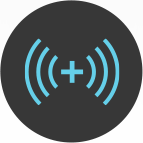
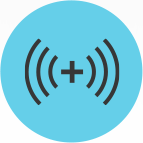 Nurse Call AutomationAutomatic call cancellation to lighten the nurse workload and give more time back to the patient care experience.
Nurse Call AutomationAutomatic call cancellation to lighten the nurse workload and give more time back to the patient care experience.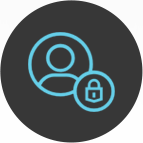
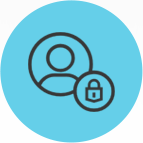 Staff SafetyDiscreet, accurate and real-time alerts through a wearable duress button that helps provide an efficient response and protect staff against workplace violence.
Staff SafetyDiscreet, accurate and real-time alerts through a wearable duress button that helps provide an efficient response and protect staff against workplace violence.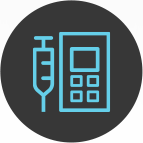
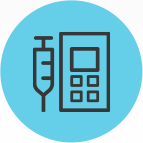 Asset TrackingIn-the-moment equipment locating to support safe and timely patient care and controlled costs.
Asset TrackingIn-the-moment equipment locating to support safe and timely patient care and controlled costs.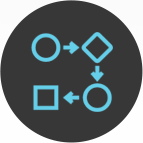
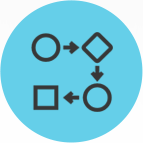 Patient FlowEnhanced communication designed to optimize operations, enrich patient experiences and improve staff satisfaction.
Patient FlowEnhanced communication designed to optimize operations, enrich patient experiences and improve staff satisfaction. AnalyticsDerived from actionable insights at your fingertips, accurate location information drives informed decision making.
AnalyticsDerived from actionable insights at your fingertips, accurate location information drives informed decision making.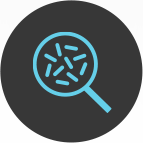 Contact TracingQuick, accurate information at your fingertips for your contact tracing efforts.
Contact TracingQuick, accurate information at your fingertips for your contact tracing efforts.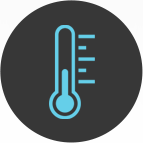
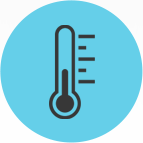 Temperature MonitoringA partnership of best-in-class solutions, available through an interface with Primex environmental monitoring.
Temperature MonitoringA partnership of best-in-class solutions, available through an interface with Primex environmental monitoring.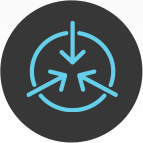
 InterfacesA seamless architecture that exchanges data automatically between your RTLS and other enterprise applications in real time.
InterfacesA seamless architecture that exchanges data automatically between your RTLS and other enterprise applications in real time.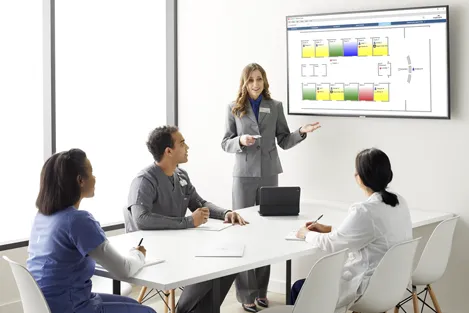

 RTLS System Integrator ResourcesDiscover our library of sales and marketing resources.
RTLS System Integrator ResourcesDiscover our library of sales and marketing resources.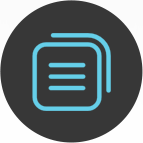 Case StudiesSee how we’ve helped our customers design better, more efficient care.
Case StudiesSee how we’ve helped our customers design better, more efficient care. White PapersEmbrace innovation in your health system with thought leadership.
White PapersEmbrace innovation in your health system with thought leadership.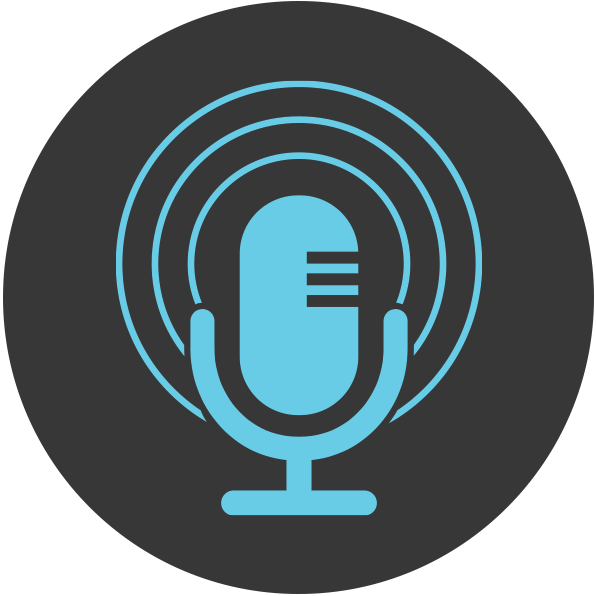 Webinars + PodcastsListen to the latest from Midmark RTLS here.
Webinars + PodcastsListen to the latest from Midmark RTLS here.
 BlogThink differently and solve problems with new ideas to enhance patient care.
BlogThink differently and solve problems with new ideas to enhance patient care. Published PerpectivesChange is a constant in healthcare—and we’re leading the way. Read our recent bylines and articles.
Published PerpectivesChange is a constant in healthcare—and we’re leading the way. Read our recent bylines and articles. InfographicsLet us show you the whole picture with real-world applications.
InfographicsLet us show you the whole picture with real-world applications. RTLS Press ReleasesFind out what’s happening at Midmark RTLS. View the latest news about Midmark RTLS and the healthcare industry.
RTLS Press ReleasesFind out what’s happening at Midmark RTLS. View the latest news about Midmark RTLS and the healthcare industry.